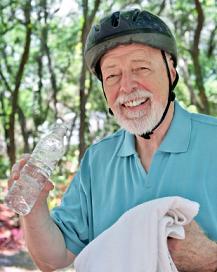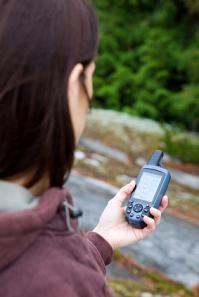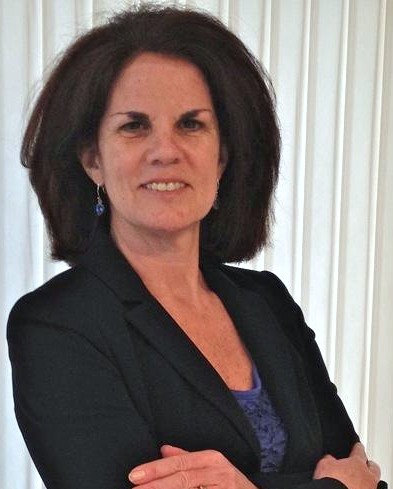"You Don't Know Jack"... Missed Opportunities to Engage Him
 May 3, 2010
May 3, 2010 
Let me tell you about Jack…
Last week, Jack celebrated his 54th birthday with his wife and two teenage girls. His daughter Alyssa told him to "try not to finish the cake when no one is looking”. Jack has packed on the pounds in the past few years and is currently 60+ pounds overweight. Alyssa teased her father about how many miles he will need to bike to work off the extra slices. Jack’s wife Joan is concerned since she knows that he is at risk for Diabetes.
Several months ago Jack complained to his doctor that he was disgusted with his weight and was ready to make a change. Over the last few years, Jack tried several diets but he still doesn't make the right dietary decisions. Jack told his doctor that he was considering bariatric surgery and asked for a referral to meet with a surgeon. Maybe his doctor could have “prescribed information” for Jack such as watching a video on a weight loss approach which has been successful for others like Jack or signing up for a eNewsletter with tips to control his weight through diet and exercise from a "trusted source".
Jack’s Health Plan is after him to participate in their Pre- Diabetes Program but Jack would rather focus on other health issues. Jack can’t stop thinking about the bariatric surgery. He is worried about taking such a big step but does not know about other less invasive options. Jack is not aware of the “decision support tools” that his health plan has online since he has not been to the member portal in years. He also ignores the mass produced print and eNewsletters since they do not address his specific interests. He had to contact this health plan to obtain the referral to the specialist but has not received any information from them which will help him understand his options.
Jack’s employer launched a wellness incentive program with weekly on-site challenges offering rewards for his “steps”. Unfortunately, Jack travels frequently and misses these competitions. He bikes on weekends but that is not part of his employer’s wellness incentive program.
When he has time, Jack visits an online community of people interested in weight loss. Too bad this website does not have a sub-community of business travelers since this “segment” has the same challenges with eating out every meal and having limited time to work out.
There are many opportunities to step in to educate, engage and motivate Jack to follow the path to better health. What can you do to get to know and help Jack?
Series: Engagement Path #5- Reward Me
 April 22, 2010
April 22, 2010  Whether companies are launching “challenges” or online tools for healthy change, they are putting rewards in place for maximum response. For example, they are offering consumers rewards for participating in a smoking cessation or a weight loss program as well as winning the team competition for the most steps. With the increase in funding for prevention and wellness, rewards programs are getting more attention.
Whether companies are launching “challenges” or online tools for healthy change, they are putting rewards in place for maximum response. For example, they are offering consumers rewards for participating in a smoking cessation or a weight loss program as well as winning the team competition for the most steps. With the increase in funding for prevention and wellness, rewards programs are getting more attention.
"Last week, I was awarded a wellness day off and I feel like a new person!"
“The rewards program has helped me. I am more aware of getting the steps that I need to make to my goal each day.”
“My company started awarding points to get us to be healthier. The program started off with lots of excitement but has kind of fizzled out.”
“Reward Me” Opportunity: Provide currency of value (e.g. money, time off) in exchange for desired behaviors while keeping the rewards dynamic, tiered (e.g. higher level for achieving stretch goals) and personalized to the individual.
Engagement in Action:
- Employers such as REI and Bridgepoint Education are using Limeade to engage and empower their employees. With the Limeade platform, employers enable their employees decide what they want to do to earn points for rewards. With Limeade’s mobile application, employees can even plan, track and monitor their goals while on the go. In addition to their own activities, employees may choose to participate in challenges from their employer or from others in the Limeade online community such as participating in an online coaching session, attending an onsite seminar or completing the challenge activity. For example, users challenge others to train for and complete local races, lose pounds, not drink for a month, or even "get to work without your car the most times this quarter". Employers challenge employees to "Exercise 30 minutes, 6 days a week" to "Contribute (your time or money) to a charity of your choice this month", to "do something for YOU in the next two weeks", or even "post an essay about how you've been inspired to change your life". Rewards typically fall into two categories; 1) an incentive benefit related to health care -- lower premiums, deductibles or access to a superior plan, or 2) other stuff their specific employees value -- vacation time, ski lift tickets, or dinner with the CEO.
- According to Forbes, Ochsner Health Systems and many other employers have used the Virgin HealthMiles platform with the “Pay for Prevention” program to reward employees for healthy behaviors. Points are given for the measurement of vitals and tracking of activity. Employers are testing different rewards such as lower premiums, gift cards and days off and the reward value can range up to $2,500 per year. In addition to challenges from a specific employer, Virgin also runs competitions across the employers for all participants in their network. For the selected challenge activity, the participant wins entries into a lottery for travel such as a trip to Sir Richard’s Private Island in the Caribbean.
Employers need to be creative in how they are packaging, positioning and promoting their rewards program. The program participants are in the best position to advise their employer on suggested rewards, reward structure and rewarded behaviors. Think about how the rewards program may differ for employees working in a call center or retail store compared with those employed by a financial services firm.
The biggest challenge for sustaining participation is to determine ways to reward consumers for increasing the time and frequency on activities they enjoy doing (e.g. swimming, biking) and for making healthy decisions about their diet whether they are in a supermarket or restaurant.
Series: Engagement Path #4- Challenge Me
 April 15, 2010
April 15, 2010  Health related competitions are everywhere. Not just on TV with the Biggest Loser but much closer to home. We are being challenged by our co-workers, colleagues and our community. These challenges are being tied into online games, social media, mobile and wireless tracking devices. Since challenges leverage relationships, they are extremely viral and successfully generating participation. Think about how much likely you are to respond when a challenge is sent by your friend or co- worker.
Health related competitions are everywhere. Not just on TV with the Biggest Loser but much closer to home. We are being challenged by our co-workers, colleagues and our community. These challenges are being tied into online games, social media, mobile and wireless tracking devices. Since challenges leverage relationships, they are extremely viral and successfully generating participation. Think about how much likely you are to respond when a challenge is sent by your friend or co- worker.
“Debbie- You will be joining your GiantSteps team for a walk at noon.”
“Debbie- Your team is 950 steps beyond for the week.”
“David has challenged you to lose 5 lbs in the next 60 days.”
“Challenge Me” Opportunity: Enable consumers to initiate and participate in an individual or group competition as well as influence others throughout the challenge that is designed to encourage healthy behavior.
Engagement in Action:
- Cleveland Clinic launched the Shape Up The Nation Program to their employees. Employers continue to play a role in motivating their employees to become more healthy and are rolling out programs with a competition component. With Shape Up The Nation, Cleveland Clinic goes further by measuring success based on weight loss, BMI as well as activity (number of steps). In addition to strong participation, Cleveland Clinic is experiencing high satisfaction rates for the program and has rolled out several of these challenges throughout the year.
- Livestrong has devised the Dare Program which gives people the option of taking or giving a dare such as “Dare to get more sleep”. There is also a companion “Dare to get more sleep” community where members share experiences as well as post links to resources (e.g. articles, videos) on secrets for a better night sleep.
- Contagion Health's Get Up and Move is a "social game" where challenges are launched by friends and family to motivate healthy activity. For example, 'I will take the stairs this week' if 'you will walk to Starbucks'. Unlike many of the 6-8 week challenges, these mini-challenges result in quick successes and can be fun. Those of us that are competitive can use this tool to initiate creative challenges with close friends. And don't be surprised if your friend sends a follow up challenge back your way.
Most “challenges” are physical competitions which is valuable to get consumers moving. Think about how challenges can also be utilized to test for knowledge, furthering the “teach me” opportunity. Are you smarter than your co-worker?
Series: Engagement Path #3- Motivate & Guide Me
 April 7, 2010
April 7, 2010  Healthcare organizations are realizing they can leverage technology to help personalize the experience with needed motivation and guidance. Consumers benefit from expert information and tools tailored to their individual goals and interests. These personalized resources not only motivate but also guide the consumer through their “decisions of daily living”. They need guidance when determining how to eat more healthy, improve their fitness as well as manage their stress.
Healthcare organizations are realizing they can leverage technology to help personalize the experience with needed motivation and guidance. Consumers benefit from expert information and tools tailored to their individual goals and interests. These personalized resources not only motivate but also guide the consumer through their “decisions of daily living”. They need guidance when determining how to eat more healthy, improve their fitness as well as manage their stress.
“Help me set realistic fitness goals and give me ongoing feedback on my progress.”
“Just tell me what to do to lose the weight.”
“Keep reminding me about ways to lower my cholesterol.”
“Help me find way to improve my sleep.”
“Motivate & Guide Me” Opportunity: Gain commitment, proactively push to reach goals, deliver actionable information, provide decision support tools and share ongoing feedback.
Engagement in Action:
- Wellcoaches offers a high touch service enabled by technology which puts the consumer in control of their plan and progress towards goals. The Wellcoach continues to hold their client “accountable” for making needed changes to reach these goals. Armed with insight about the consumer’s preferences for exercise and diet, the coach constantly pushes for progress incorporating these preferences into the plan. In addition, the Wellcoach serves as a cheerleader celebrating accomplishments along the way.
- Sensei leverages technology to deliver a personalized experience for weight loss. The “virtual dietician” recommends meals based on the consumer’s stated food preferences and lifestyle. Sensei pushes out the fitness message as a reminder for today’s activity plan “motivational messages” showing progress toward the goal and “behavior” messages to focus the consumer on healthy alternatives. MySensei provides access to tools including a shopping list to motivate healthier food choices.
Motivation is individual and varies based on the consumer’s unique set of health issues and readiness for change at that time. Even consumers who are self-motivated need information and tools to guide them and help them confidently navigate the decisions when coming to a fork in the road.
Most consumers need a more comprehensive solution which responds to triggers for need, delivers personalized information and tracks effectiveness to inform future touches.
Series: Engagement Path #2- Support Me
 April 5, 2010
April 5, 2010 
As social media explodes in healthcare, companies are launching new communities and communication tools to connect consumers with each other and with experts. Research has shown that consumers value learning about and from the experiences of others and receiving emotional support.
Healthcare organizations are building online support communities combined with social media tools, enabling consumers to connect with friends and strangers to share a common bond. Consumers are responding by visiting their channel on YouTube to upload a video about their personal experiences or sharing a comment about a video that moved them. They are on Facebook leaving their “thumbs up” when they like what they see. Consumers are there (virtually) with words of support for those newly diagnosed and those experiencing set- backs.
“I am scared because my child is having problems managing his diabetes at school and I don’t know what to do”.
"My MS is getting worse. I am frightened to speak with others who are further along but would like to reach out to those who are experiencing what I am right now.”
“My family is getting the brunt of my frustrations and I feel terrible.”
“Support Me” Opportunity: Provide the capability to share encouragement, validation and an emotional connection with other people and experts.
Engagement in Action:
These innovative organizations are offering consumers the capabilities to demonstrate their support online.
- Livestrong Facebook community has over 700,000 fans. Community members are extremely engaged posting pictures and comments about their most personal experiences on this very public site. Unlike many communities which have a more limited response, Livestrong is a vibrant community with hundreds of posts sharing thoughts and endless support. Livestrong also engages their community off line through events, further connecting and building bonds between their members.
- TuDiabetes ran a Making Sense of Diabetes program leading up to World Diabetes Day. Members uploaded videos sharing their experiences living with diabetes on a daily basis. Many of these videos received high ratings from the community and comments were shared showing support.
- AARP has launched LifeTuners, an online community for young adults (20s and 30s) offering “unbiased, balanced resources, information and financial advice”. Within the community, consumers are accessing advice and support from experts and their peers and rating the recommendations they read. AARP has built this support community to educate young people about the things they can do now that will impact their future. Notice the parallels with wealth and health.
- MDJunction offers an online community with the ability to share different types of visual messages such as “a hug”, “a cheer up”, “a happy for you”, “a prayer” and “a salute”. Community members can also display one or more than a dozen different color ribbons showing their support from gray for Juvenile Diabetes to black for Melanoma Cancer.
Healthcare companies need to move beyond the basics of setting up different social media destinations and envision integrated offerings that enable consumers to care for one another anytime and anywhere, through online and mobile. They also need to determine the role that the “expert” plays to support and strengthen the community.



